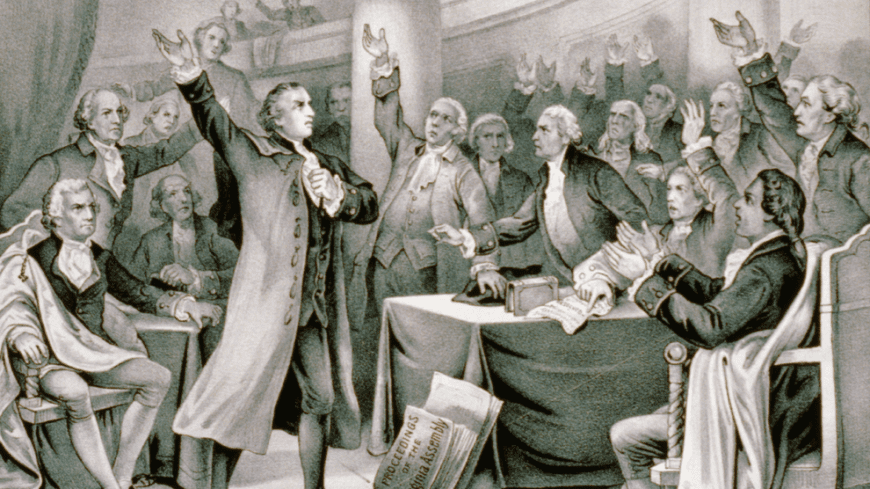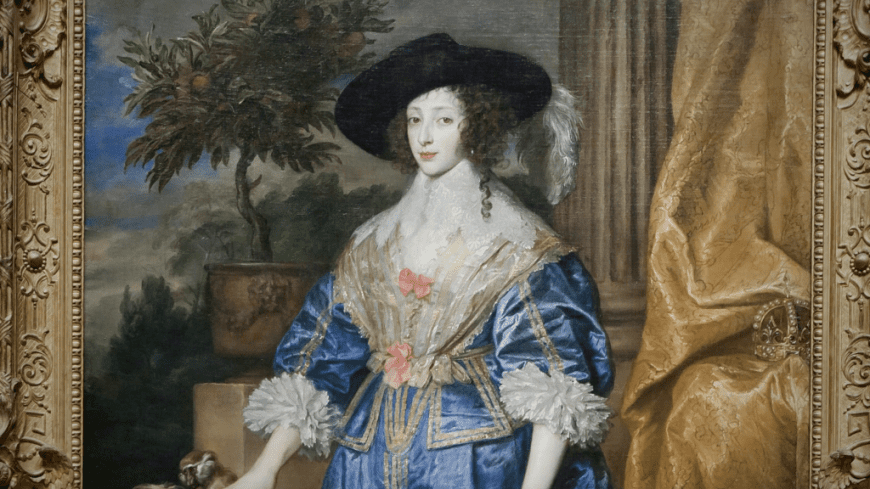The history of hemp is a long and fascinating tale fraught with war, conspiracy speculation, celebrities, and scandal.
Hemp is cannabis. Don’t mistake the two for being individual species. Hemp is not really a scientific designation. It’s an industrial and legal designation for any cultivar of Cannabis sativa that produces less than 0.3 percent THC by dry weight. That definition isn’t static, either: some places define hemp as Cannabis sativa that produces 0.05 percent THC, while others allow that figure to go as high as 1 percent.
With that out of the way, let’s look at its history in the U.S.
The plant has been around the Americas for hundreds of years. It’s had a varied and sordid history. Hundreds of years ago, cultivation was enforced on American farmers. They had to grow it or face financial reprimands. In 2018, most of America’s hemp comes from China and Europe. Mostly China, though.
Pre-Columbian
Uck. I hate dividing an entire historical epoch from another by a single man’s name, but, for all his horror, Christopher Columbus undeniably altered the American landscape forever.
Long before Columbus butchered kids and tortured women, indigenous Americans used a hemp-like plant known as Apocynum cannabinum. It goes by other names such as wild cotton, dogbane, and – wait for it – Indian hemp. For the record, this “native to America hemp” isn’t Cannabis sativa, obviously. Apocynum cannabinum belongs to the Apocynacae family under the Genitanales order, whereas our much beloved Cannabis sativa belongs to the Cannabaceae family under the Rosales order (in case you’re wondering, yes, roses belong to the Rosales order, too).
Indigenous Americans used Indian hemp for making threads, cordage, baskets, medicines and clothing, though the native varietal isn’t closely related to cannabis at all. Its seeds are edible, but its flowers are poisonous, very unlike Cannabis sativa.
Hemp in Colonial Times
In 1632, the Virginia Assembly issued a decree that forced all colonial farmers to grow hemp. You read that right: at one time in our nation’s history, farmers were legally required to grow weed. My, how far we’ve fallen from the… trees.
For those of you unfamiliar with American history – which likely includes most of the Americans reading this right now – it’s important to understand what the Virginia Assembly was and why that decree was such a big deal.

Image Credit: Wikimedia
Back in colonial times, there was no federal government. There was no United States. There was a patchwork of British colonies named after various British royals, like Georgia for King George II and Maryland for Queen Henrietta Maria (who was actually French, but I won’t get into that whole mess right now). Virginia got its name from Queen Elizabeth – the legendary “Virgin Queen” – who also happened to be one of Britain’s most awesomest and most beloved rulers of all time. She was so cool the Founding Fathers kind of made Virginia the colonial home base – for all thirteen colonies.
Okay, it’s actually more complicated than that, but Virginia was the central hub for all things colonial. When the Virginia Assembly made a new law, the other colonies usually followed suit. After all, this was the home of such heavyweights as George Washington, George Mason, James Madison, and Thomas Jefferson. Richmond, Virginia, where the assembly convened, was so crucial to early America that prior to and during the American Civil War, the slave-owning Confederate States made Richmond their national capitol.

Queen Henrietta Maria. Image Credit: London Art Studios
Anyway, back to the plant.
Hemp and the Spanish Armada
Now that all that Virginia Assembly background is out of the way, I’m going to take you back nearly another century, to 1588. European history buffs will recognize that as the year when the almighty Spanish Armada was defeated by – ta da! – Queen Elizabeth’s Royal Navy at the English Channel. I won’t bore you with too many details, but back then, the Spanish Armada was one of the most badass naval fleets in the world.
When Elizabeth crushed the Spanish Armada, it ended an era of Spanish naval dominance. For nearly three hundred years after, the British navy would be known the world over as Europe’s elite ocean fleet. Naval dominance was instrumental in establishing the British Empire, and the American colonies were a huge part of that because they grew –
HEMP.
Hemp was essential for making ropes, sails, and other textiles necessary to make ships do the shipping thing. It doesn’t rot from salt water like most other natural fabrics. Another important historical tid-bit: the British navy often coordinated with one of the world’s first evil megacorporations – the British East India Tea Company – and at times the navy essentially was the British East India Tea Company. Or was it the other way around?
Colonial Hemp, Cont’d
Regardless, hemp was a staple of the colonial cash crops. So when the colonists decided to revolt against the British and hijack the farms, it wasn’t just a jab at King George and his tax stamps. It was a threat to the British Empire’s naval supremacy, and, by proxy, a threat to the entirety of the British Empire itself.
The British demand for hemp became so insane that from 1763 to 1769, Virginia imprisoned farmers who refused to grow it. That may explain why so many lobsterbacks were willing to sail thousands of miles across an unforgiving ocean to crush the American revolution. And why the French, who beefed with the British, were willing to do the same and win the Revolutionary War for us (thanks, France!).
Post-Revolutionary War

After the American Revolution, colonial big-wigs, like George Washington and Thomas Jefferson became the leaders of the young nation. As many of you already know, Washington, Jefferson, and a number of other Founding Fathers grew hemp. Jefferson even invented a device for processing the fibers. Unfortunately, many of the supposed quotes attributed to Washington and Jefferson about getting high on weed are almost definitely hoaxes. But that’s the internet for you.
You may have also heard that the U.S. Constitution was originally written on hemp paper. Some high schoolers have twisted this even further, claiming the Constitution was written on a giant pot leaf. (Even with just ten amendments, that would’ve been the biggest pot leaf ever.) The truth? One of the first drafts of the Constitution may have been written on hemp paper. The final draft – the one sitting in the National Archives in Washington, D.C. – was written on parchment. In other words, it was written on sheepskin because hemp paper, like all paper, is fragile.
The Civil War
If the British were willing to bankrupt themselves fighting for America’s hemp farms (among other things), then the North would certainly do the same during the American Civil War. Sort of, anyway.
In 1850, the U.S. Census counted over 8,000 hemp plantations. Kentucky and Missouri – both slave states – produced over 70 percent of the nation’s hemp. Americans loved the plant, but so too did other countries, which bought tons of it from the U.S.
Just prior to the American Civil War (which started in 1861), Britain was busy getting the Chinese addicted to Chinese-grown opium (during little thing called the Opium Wars). China, like Britain, had a badass navy, and the most notorious pirates in the 1800s were not European – they were Chinese. So the British needed lots of hemp, which they used to get from Russia until Napoleon Bonaparte basically banned Russia from selling the plant to Britain.
Fast forward a few decades, and Napoleon’s nephew, aptly named Napoleon III, was warring with pretty much every country in the world because of wars his uncle started. So France liked U.S. hemp, too.
Although the plant was crucial for supplying both sides of the American war efforts, it was starting to lose its popularity because of that other slave-driven cash crop: cotton. This may offend some of you hemp warriors, but hemp clothing was incredibly uncomfortable back in those days. It was itchy and stiff, unlike cotton, which was soft and velvety.
Europeans also developed a love for American cotton, so if we saw anything during this period, it was the plant’s slow decline as America’s favorite agricultural product.
Cannabis Prohibition

Hemp’s history in the U.S. gets kind of boring after the Civil War. The U.S. relegated most production to Kentucky. The fact that they couldn’t use slaves to make ‘practically free’ hemp anymore severely limited production. Cotton reigned supreme.
Jack Herer and The DuPont Conspiracy
Now, this section will likely ruffle some feathers, but understand the onus for this particular story isn’t on us – it’s on the people who claim it’s true.
In 1985, Jack Herer, a prominent cannabis activist and breeder of the famous Jack Herer strain, published a book titled The Emperor Wears No Clothes. Most of the book is fairly sound, but in one chapter he crafts a conspiracy theory that claims the DuPont company, along with newspaper magnate William Randolf Hearst (the Rupert Murdoch of the time), billionaire Andrew Mellon (akin to a Koch brother), and Harry Anslinger (of Reefer Madness infamy) got together and decided to outlaw hemp because hemp threatened DuPont’s new invention, synthetic nylon.
Steven Wishnia at AlterNet provides a thorough debunking of this conspiracy theory. Brian Dunning at Skeptoid devoted an entire podcast to it. If all that stuff is TLDR (too long to read); let me sum it up for you.
Hemp was not popular in the U.S. in the early 1900s. Technological advances made timber the pulp of choice for making paper, not hemp. Cotton had long supplanted the plant as America (and Europe’s) favorite fabric for clothing. Newer ships used steam, not wind sails, so even shipping didn’t have much demand for it anymore. Some ropes and sails for ships still came from it. This is why a measly 14,000 acres of hemp farms stuck around.
But this idea that hemp in the 1930s was poised to become a billion-dollar crop was recently discounted by Popular Mechanics’ own editorial board, which in 1938 initially harped the claim that hemp would become, well, a billion-dollar crop.
The Dupont Conspiracy
Furthermore, good luck trying to prove DuPont, Hearst, and Mellon lined the pockets of the U.S. politicians to pass the Marihuana Tax Act in 1937. That vote took place in the shadows, with all votes cast anonymously. Who voted for? Who voted against? We don’t know.
In addition to secret votes, there’s no way to trace campaign donations back to any one corporation, either, because in the 1930s it was illegal for corporations to donate to political campaigns. Wow, weren’t those wild times, eh? Only private individuals could donate, and even then, their donations were capped.
All that aside, these are the documented facts: (1) Harry Anslinger needed a racist scapegoat substance to replace alcohol after alcohol prohibition ended or else he’d be out of a job, (2) hemp got lumped in with “marijuana” because they’re the same plant and marijuana farmers could hide their stash among legal crops, and (3) most Americans didn’t give two squirts about the plant, so they didn’t care if it got outlawed with marijuana.
Hemp for Victory
Even with the Marihuana Tax Act, some hemp production continued the U.S.
Still, it was in such minute quantities we can ignore our domestic industry for half a decade. However, in 1941, the Japanese bombed Pearl Harbor, and overnight, the U.S. is pulled into the biggest war of all time.
With war comes the need for supplies. So the U.S. government – just four years after convincing the country that reefer would create axe-murdering rapists – began the Hemp for Victory campaign. Yay, weed is patriotic again! Like the Virginia Assembly decree back in the 1600s, here we have the American government requiring Americans to grow cannabis.
The campaign was successful, but short lived. Production in the U.S. spiked between 1942 to 1944, then tapered back down to non-existence by the 1950s.

Hemp Today
If you’re an old-timer like me, you’ve probably noticed that hemp-based goods have been available in the US even during the height of federal prohibition. What gives?
Cultivation was, for the most part, banned in the U.S. since the 1930s. However, no one outlawed the plant itself. (Remember, we needed it for sails and ropes.) You could always find bracelets, necklaces, and even shirts and pants made from it. Most of the hemp products sold in the U.S. come from the European or Chinese markets.
Today, the U.S. is slowly ramping up its production, particularly in Colorado, where the Centennial State is currently the American leader in growing the plant. That’s because Amendment 64, the Colorado law that permits recreational marijuana also established a system to grow, cultivate, and process it. The catch? Almost 100 percent of Colorado’s hemp grows for CBD extraction, not fibers, food, or textiles.

Legality in the Near Future
I’ve attended a few meetings at Colorado’s Department of Agriculture which oversees the state’s hemp cultivation, production, and regulation. The department heads have remained adamant for keeping the plant’s definition at 0.03 percent THC, despite outcry from some advocates.
Why? Because the department anticipates the plant will become federally legal in the near future. The federal government defines hemp as cannabis at 0.03 percent THC. Therefore Colorado should too, if it wants to make the big bucks off this cash crop.
Some of the old hemp homesteads like Kentucky and Virginia have jumped onto the hemp train as well. Virginia is currently hosting a joint university/biotech program that may phase out the state’s tobacco farms with hemp farms. Geriatric Ninja Turtle and Kentucky senator Mitch McConnell recently introduced the Hemp Farming Act of 2018 as well.
Making Hemp Great Again
If passed, the Hemp Farming Act would remove hemp from the Controlled Substances Act, so McConnell can finally stick it to those Clinton-loving liberals in Colorado and restore Kentucky its former glory as America’s hub for farming.
Will America make hemp great again? It’s possible. Doctors, law enforcement, and dim-witted celebrities can argue all day over the dangers of THC, but hemp’s promises and potentials are not up for debate. It has no significant amount of THC. We already know what the plant can do and how it can help the environment, the economy, and society at large.
So, here’s to being on the right side of history for once. It hasn’t felt like we Yanks have straddled that side in a long time.





